Ecommerce Merchandising can go by many names: Visual Merchandising, Digital Merchandising, and Product Merchandising, just to name a few. Whatever you and your team call it, the purpose remains the same. Improve the shopper experience and increase conversions by strategically displaying products on your ecommerce site. But let’s make that an even more simple statement: In a nutshell, ecommerce merchandising is simply how you arrange things on your online store. Arranging products with a purpose and having a strategy in place will lead to more sales.
There are several ways ecommerce sites can merchandise. Some are built-in with your native ecommerce platform, but many require an upgrade with an advanced merchandising tool. Let’s break down some best practices. and get you selling more by putting your best foot forward.
Why is Ecommerce Merchandising Important?
Ecommerce Merchandising is important for many reasons. Here are just a few:
- Create an engaging shopper experience
- Increase conversions through strategic product arrangement
- Build customer loyalty by creating a brand esthetic and voice
- Build campaigns, collections, and landing pages to streamline messaging and increase Average Order Value (AOV)
- Communicate with shoppers about promotions, events, buying and shipping options, and loyalty programs
When you have an ecommerce store, merchandising is how you stand out from the competition. It’s not as much about prices (shoppers can find similar products at the same price or lower almost anywhere), it’s about the experience. Providing this experience is why a digital merchandising strategy is so important.
Merchandising tactics can be applied to everything from your homepage to checkout. Ultimately, ecommerce merchandising best practices are all about getting the right product in front of the right shopper at the right time.
Ecommerce Merchandising Strategy
Product Arrangement
Arrange products based on sales goals and ways that make sense.
Imagine you’re at your favorite boutique shopping for a new swimsuit for your upcoming Caribbean vacation. At the store, how are the swimsuits displayed? In addition to bathing suits, what else is in the section? Sunglasses? Towels? Bags? Flip flops? Hats?
Group similar products together on your ecommerce site the same way. You can do this by recommending similar items, cross-selling complimentary products, curating personalized recommendations, and by creating campaigns, landing pages, and collections.
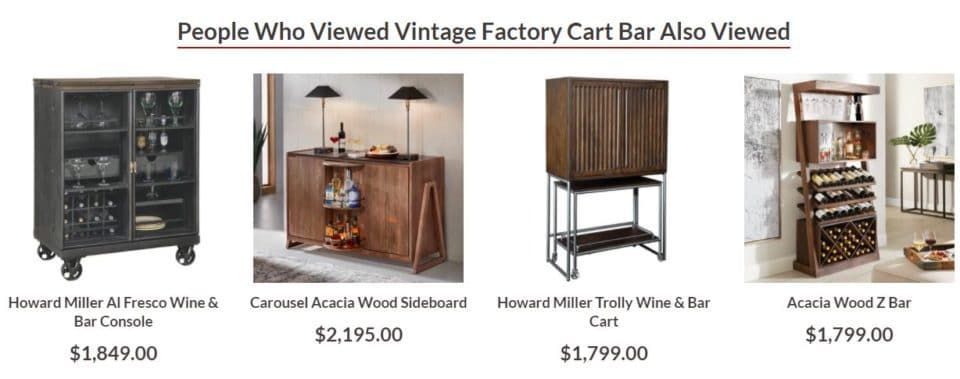
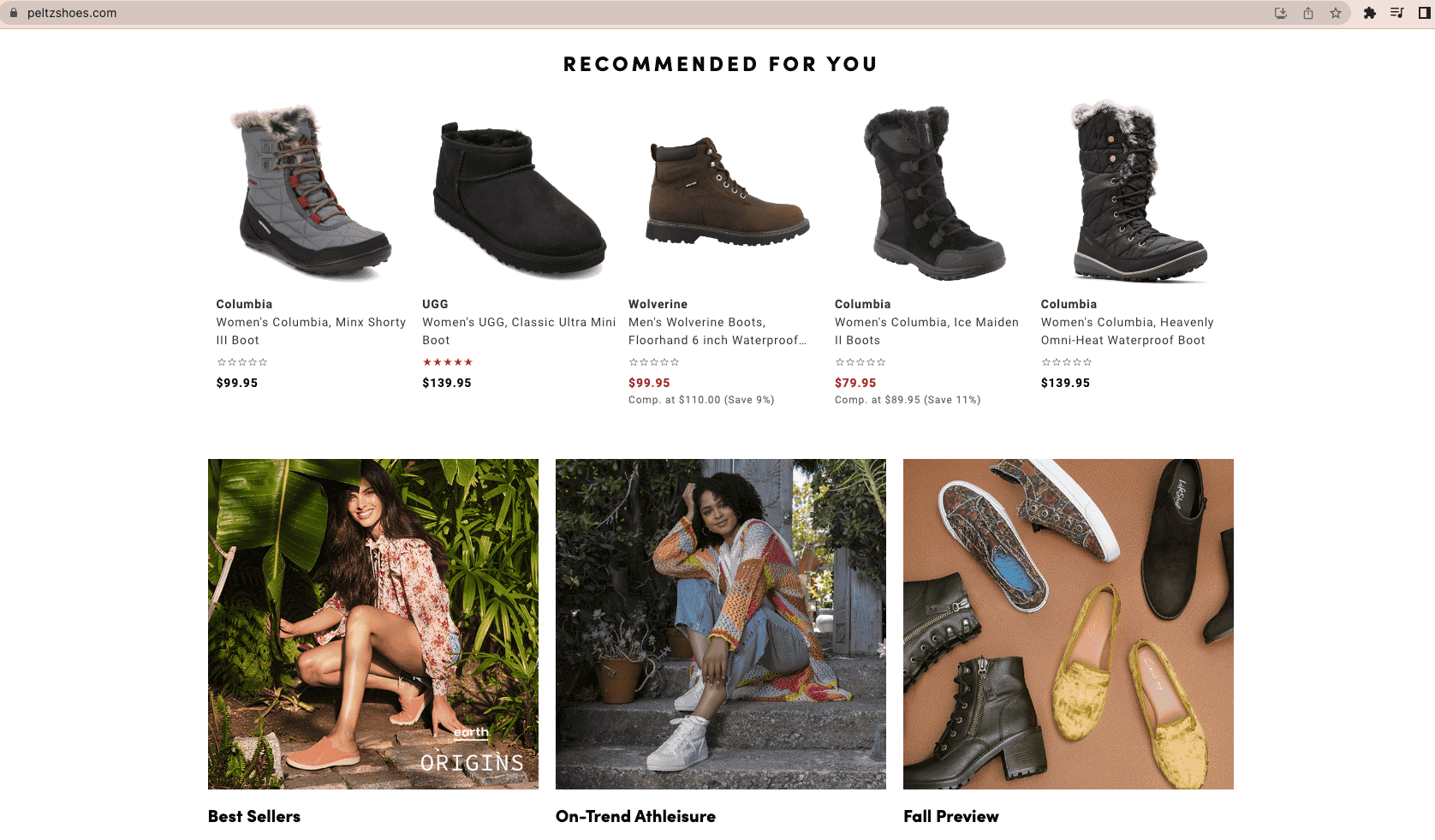
On collection and search pages, utilize merchandising tools that automate boosting best-sellers, exclusive items, and the most relevant products to the top of the page. You can also use these tools to push out-of-stock items to the bottom of pages and communicate if and when they will be back in stock.
Products to Boost:
- High-Converting
- High-Margin
- Trending
- Personalized items based on previous shopping behavior
Online clothing boutique, Lime Lush, makes great use of boosting tools to enhance their customer’s shopper experience. To do something similar and achieve the same type of success as Lime Lush, ecommerce site managers need to invest in a merchandising tool that lets you control how products are arranged.
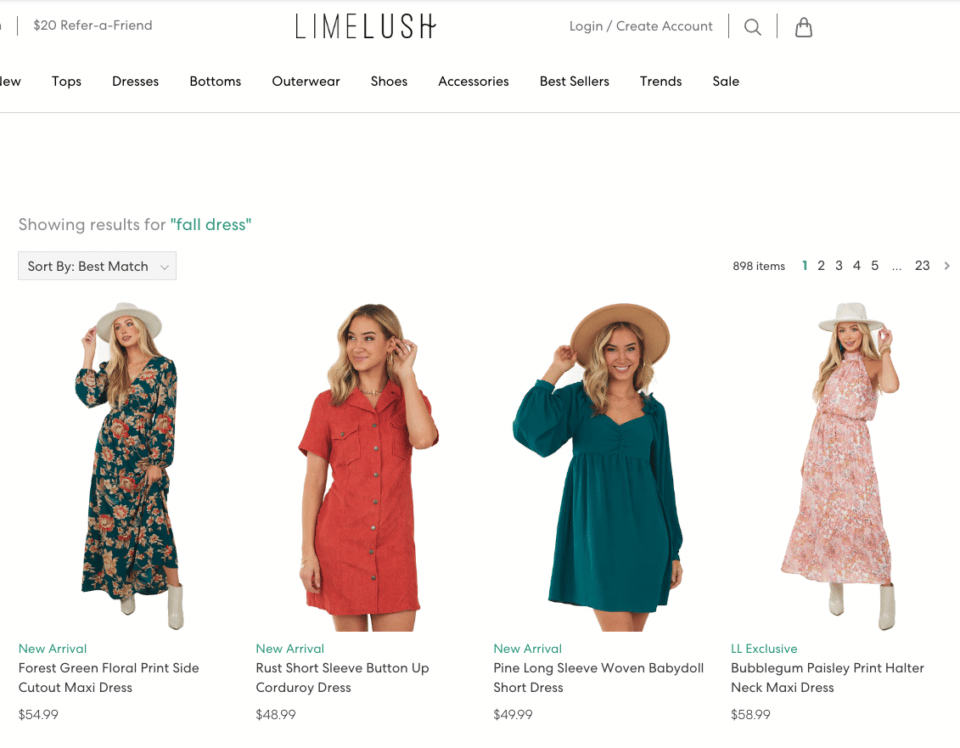
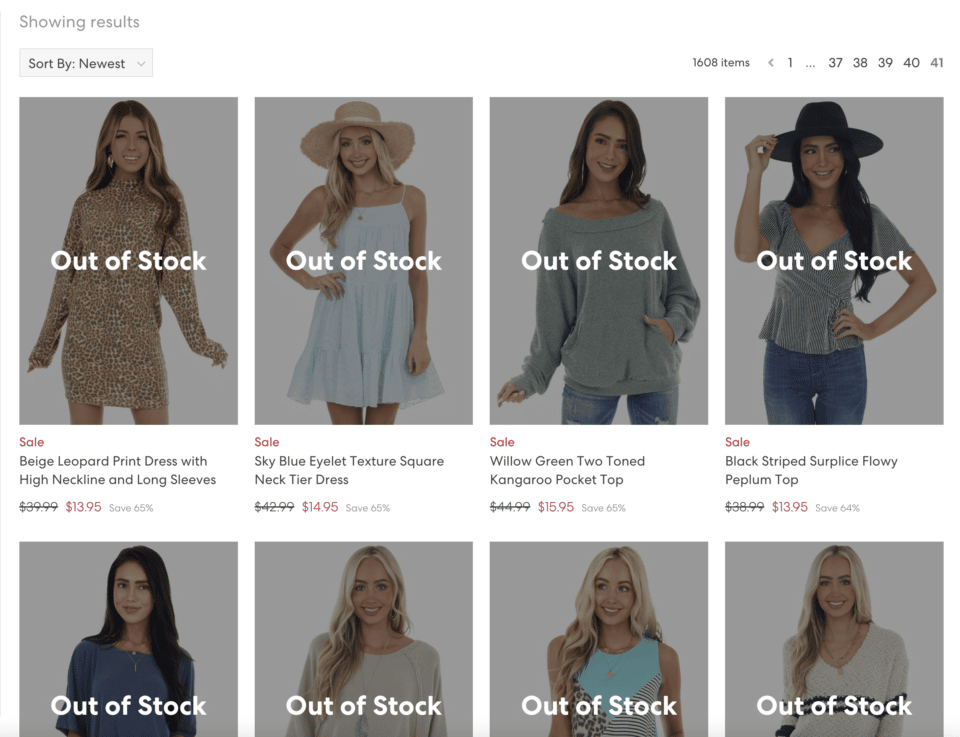
Merchandising Campaigns
Merchandising campaigns require teams to think ahead and plan as part of a roadmap. However, the extra time and effort is rewarded with higher conversation rates and growth. While there are many ways to plan your Merchandising Campaign strategy, we’ll break down a few options here.
-
Global Merchandising Campaigns
Global campaigns promote promotions, specific products, or groups of products, across your entire ecommerce site. Art Supply store, Dick Blick, uses Global Campaigns to promote promo codes on their site. This gives their shoppers a better experience by ensuring they receive up-to-date, relevant info that they don’t need to spend time searching for. Providing this info upfront leads to higher AOV and happier customers.

Dick Blick Free Shipping Promo Follows Shoppers Throughout the Site
-
Landing Pages
Some merchandising tools give merchants the ability to create custom landing pages. Use this feature to create pages that align with marketing campaigns, new product launches, and seasonal collections. Clothing store, Fabletics, uses landing pages in several ways. With frequent celebrity collaborations, they use this feature to promote their new lines in addition to sale items, and other collections such as “cold weather”.
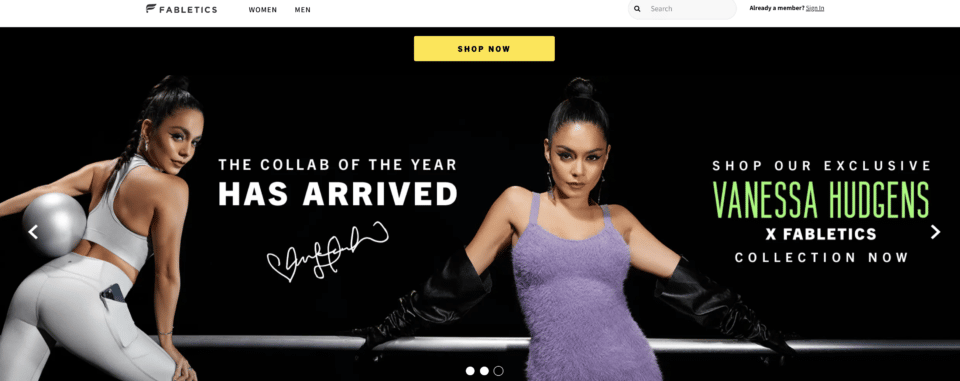
Fabletics Vanessa Hudgens Collaboration Collection
-
Banners and Badges
Display customizable banners on search result pages, landing pages, and category pages to promote sales, collections, and communicate messaging.
You can use banners at the top of pages or make use of Inline Banners. Inline banners show up in the product grid and give you another spot to highlight promotions, sales, collections, events, and buying guides.
General stores have a lot of products and a lot to communicate with shoppers. Mast General Store gets messaging to their customers through use of inline banners throughout their product pages.
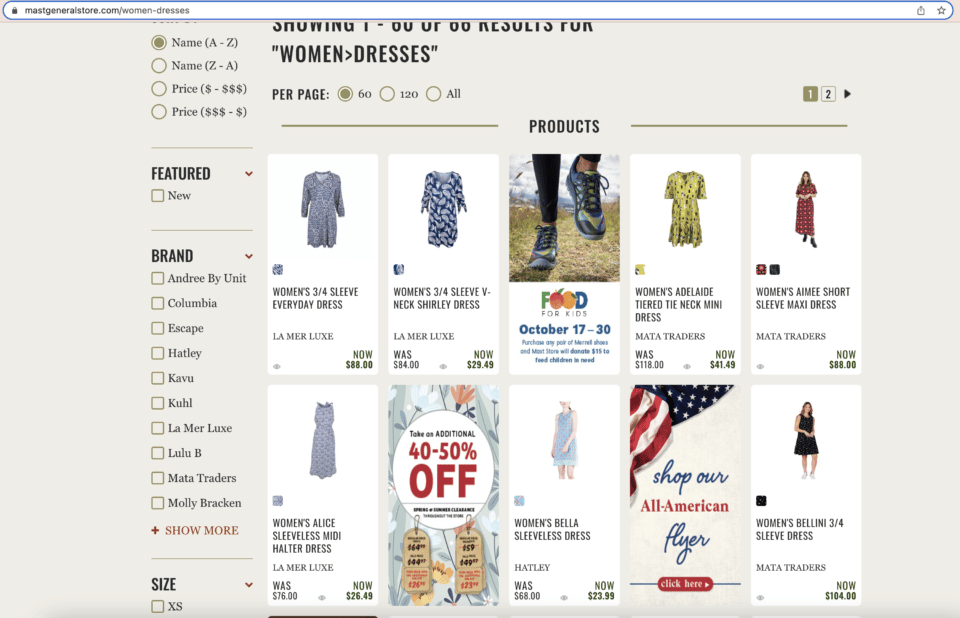
Inline Banners on Product Pages for Mast General Store
Another way to highlight items that are trending, selling fast, back in stock, and on sale is to add merchandising badges to product list pages. Think of badges as the digital equivalent to in-store shelf signs and stickers. Badges get shoppers attention and create a sense of urgency around their purchase.
Clothing brand, WildFang, uses badges throughout their site to tell shoppers about sale and new items.
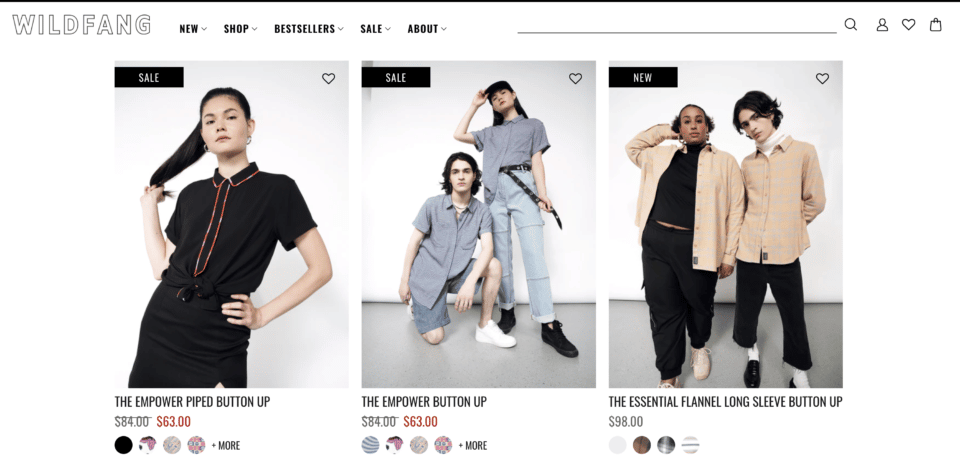
Wild Fang Uses Badges to Highlight Sale and New Items
Geo-Merchandising
Dynamically display relevant products to shoppers based on their physical location. This is incredibly important for ecommerce sites with a national or global reach. When it’s winter in Australia, it’s summer in the United States. You wouldn’t want to show shoppers the same items in both locations. Geo-merchandising can get even more detailed by drilling down to state. After-all, the same idea applies depending on which part of each you’re in. Show shoppers seasonally-appropriate apparel, merchandise for their local sports team, or home and garden products that reflect their local climate. You can also customize messaging to accommodate localized shipping policies or sales.
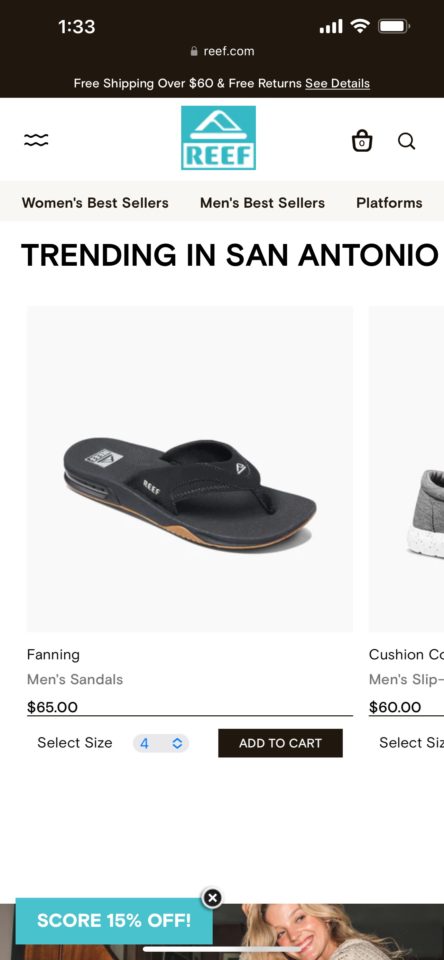
Reef Uses Geo-Merchandising to Show Trending Products by City
Omni-Channel Merchandising
Omni-channel merchandising is when you create an entire experience for shoppers across touchpoints. These touchpoints include:
- Brick-and-mortar
- Online
- Social Media
- Third-Party Marketplaces
Essentially, omni-channel focuses on the shopper and meeting them where they are.
“Merchants who adopt just one omnichannel grow 38% in revenue on average their first year. Now, if they’re adopting two or more, their revenue increases 120%. If that’s not enough for you to look into omnichannel strategy is”
– Jenna Galardi, Senior Omnichannel Growth Manager, BigCommerce
As highlighted in Searchspring’s Black Friday Checklist webinar, here are a couple omni-channel considerations:
-
Utilize Marketplaces
Marketplaces provide here are several options to get your products in front of shoppers, including Amazon, Instagram, and Google Shopping. Experiences on these sites need to be just as smooth and streamlined as they are on your ecommerce site.
Optimize for each platform by understanding and accommodating image requirements and character limits. Look at how products are displayed and use images and copy that work best for the space.
-
Influencers
If you use influencers (and if you can, you should!) find ones who understand your brand’s values and can effectively communicate this with their followers. They should also feel authentic and have a similar audience to yours.
Get the Right Products in Front of the Right Shoppers
Essentially, online merchandising helps you deliver relevant products to shoppers and increase AOV. You’ll likely need to add an advanced merchandising solution to your ecommerce tech stack since most native platforms offer the minimum and don’t allow for much control or variation. But the good news is, the product pays for itself with the increase in conversions these tools will bring to your site.




